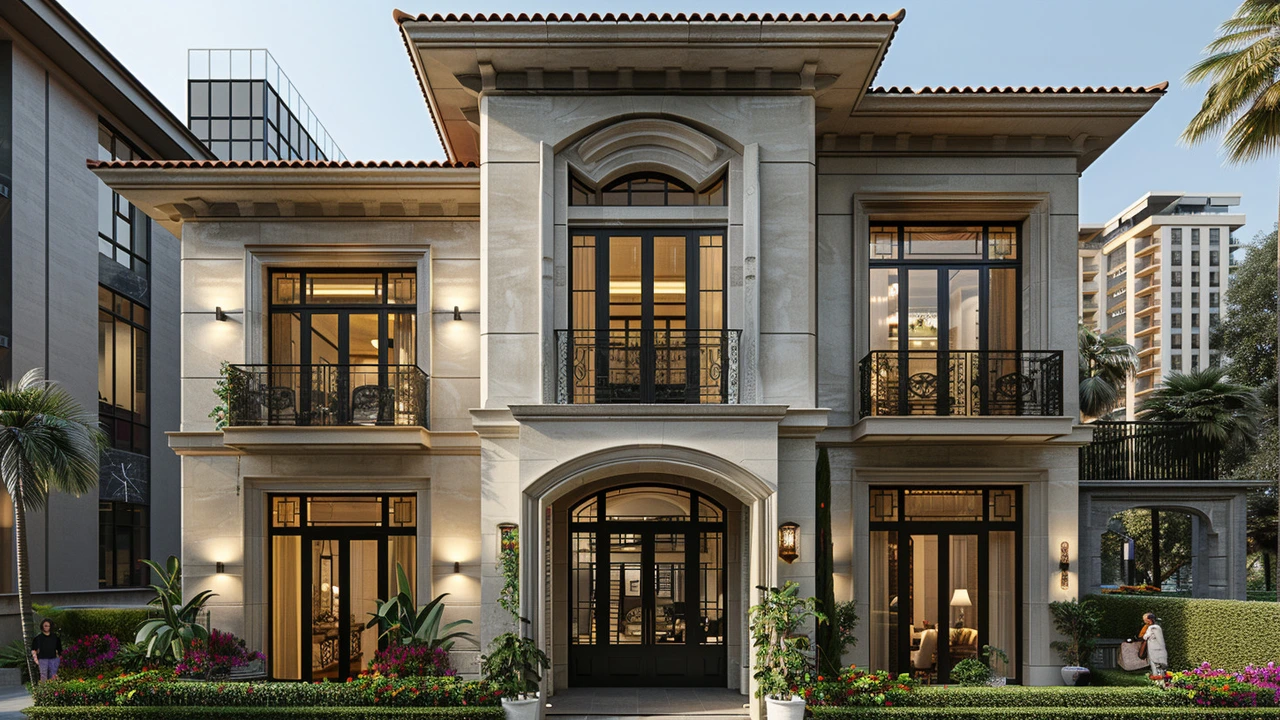Mediterranean Revival architecture combines elements from various regions around the Mediterranean Sea, creating a timeless and visually captivating style. Its use of warm colors, arches, and lush landscaping makes it a favorite among designers. Practical aspects, such as its ability to stay cool in hot climates, add to its desirability. This article dives into why this architectural style continues to be popular and how it can be applied to modern designs.
Architecture Design: Practical Guide to Styles, Trends, and How to Spot Them
What if the building across the street could tell you where and when it was born? Read its columns, materials, and roofline and you get a story. This short guide gives clear, usable tips to read buildings, pick styles for projects, and follow today’s architecture design trends without jargon.
Start by looking for three simple things: form, details, and material. Form means shape—domes, flat roofs, or sharp angles. Details are windows, moldings, or ornament. Material is brick, concrete, glass, or tile. Together they point to styles like Colonial, Renaissance, Greek Revival, Beaux-Arts, or High-Tech. Spotting one strong clue often leads you to the full style.
Quick style guide
Colonial: symmetry, sash windows, and pitched roofs. Renaissance and Greek Revival: columns, balanced proportions, and classical details. Beaux-Arts: grand facades, sculptural ornament, and formal steps. High-Tech and Neo-Futurism: exposed structure, glass-and-steel skins, bold geometry. Constructivist and Expressionist buildings favor dramatic shapes and political or emotional statements. Once you know a few markers, you’ll recognize these styles around cities and textbooks.
Want practical ways to use this in a project? Match style to function. Choose Beaux-Arts or Greek Revival for formal public buildings and institutional facades. Use Mediterranean or Ranch-style cues for relaxed homes—arched windows, clay tiles, and single-story plans. For offices or tech hubs, think High-Tech or Minimalist layouts: open plans, visible systems, and flexible floors. Mixing styles can work if you respect scale and materials; a modern glass addition often reads better when it respects the original building’s rhythm.
How to study buildings fast
Walk, sketch, or photograph one building a week. Focus on three features: entrance, windows, and roof. Ask simple questions: Is the entrance central or off to the side? Are windows regular or varied? What material dominates? Use free resources—local heritage listings, city walking maps, and a few good books or museum sites to confirm your hunches. Over time, pattern recognition replaces guesswork.
Preservation matters too. Older styles like Georgian or Baroque carry history and neighborhood identity. When renovating, keep key elements—window proportions, cornice lines, and entry details—so the building still reads as its original style. For new builds, consider how scale, street alignment, and setback affect the surrounding character.
Finally, follow current trends but don’t copy them blindly. Look at Neo-Futurism and High-Tech for ideas about sustainability and flexible spaces. Learn from classic styles for proportion and detail. Whether you’re studying, renovating, or designing, focus on clear choices: pick a dominant style, keep material honesty, and prioritize function. You’ll read and shape better architecture design after a few deliberate practices.
If you want quick next steps, start a small study routine: pick one article each week—Colonial, Renaissance, Beaux-Arts, High-Tech—take photos, note three features, and write one sentence about how you'd use that idea in a project. Join a local walking tour or online forum, and bookmark Architectural Artistry Chambers for deeper reads and images. Small habits build real design sense fast and enjoy the process.

